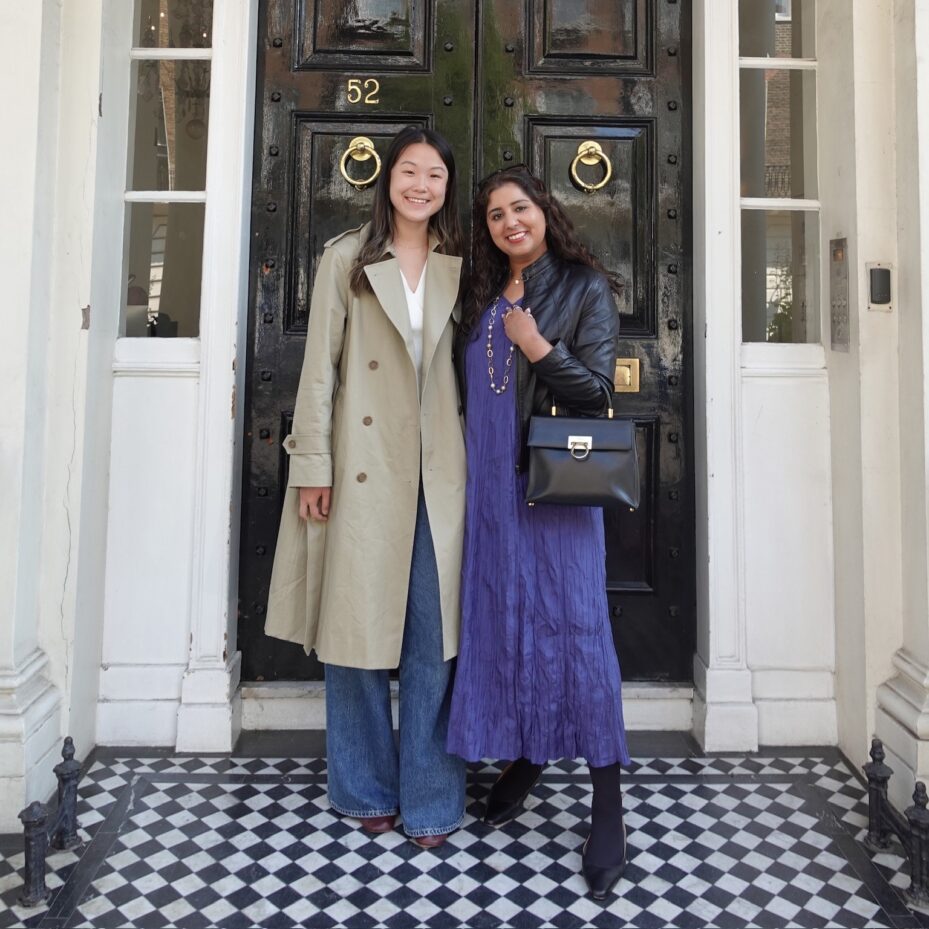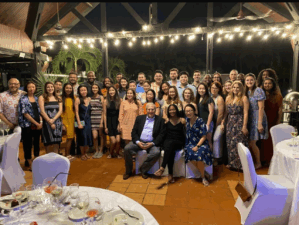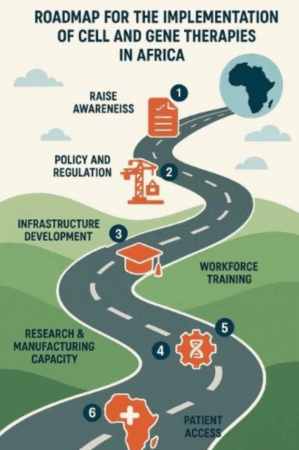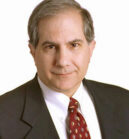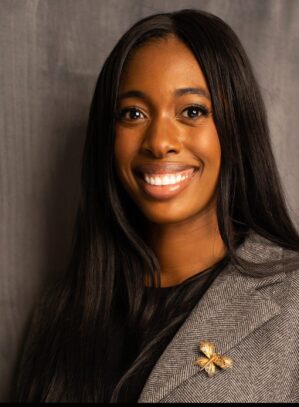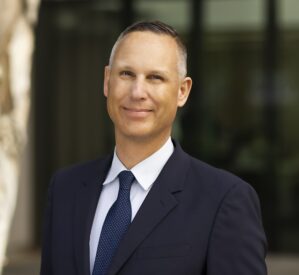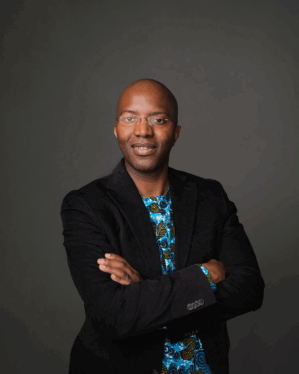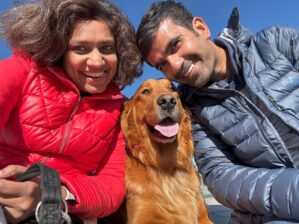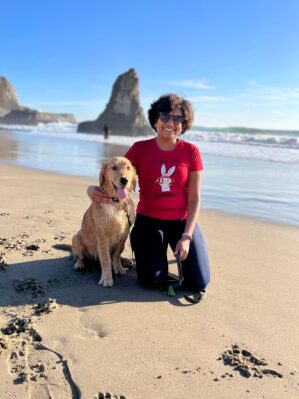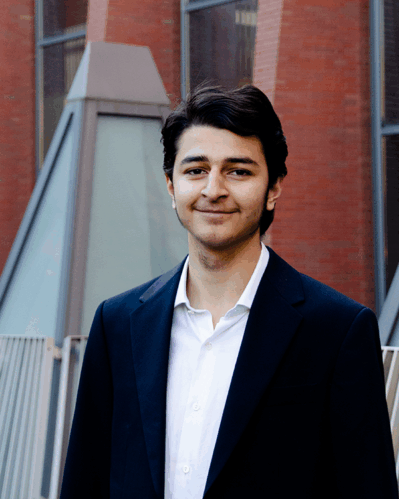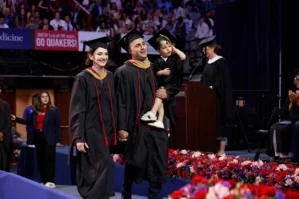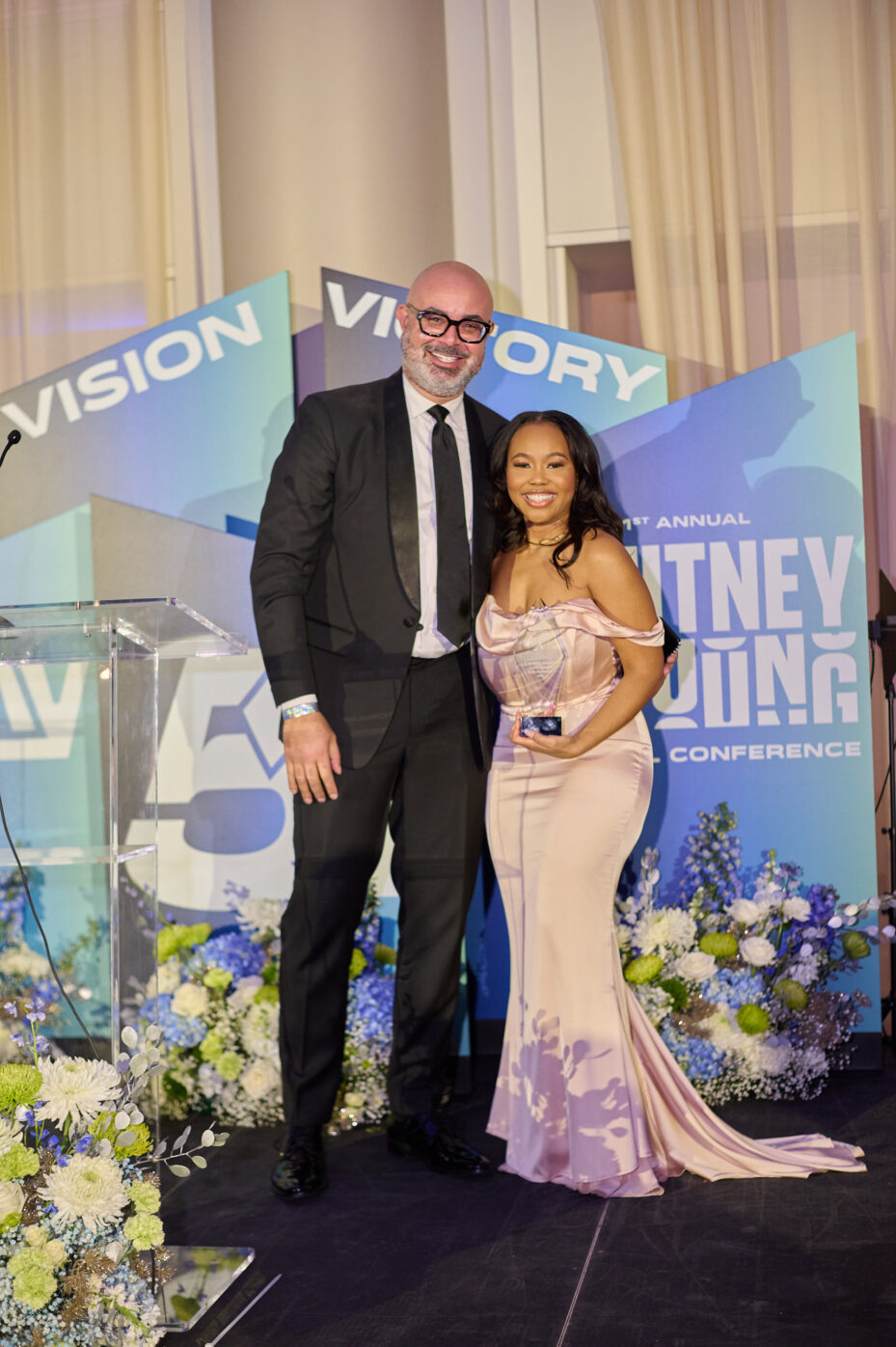The following is Aarati Cohly WG25 and Yutong Liu WG26’s firsthand experience organizing and executing a new European Trek with the Beauty Club.
Aarati Cohly: I joined the Wharton Beauty Club inspired by the previous year’s professional treks. Meeting industry leaders helped me see beauty not just as a passion but as a career path. Though I started as VP of Marketing, I quickly gravitated toward event planning; supporting NYC treks, organizing panels, and ultimately pitching a bold new idea: launching Wharton’s first-ever Beauty Trek to Paris and London.
With just six weeks to plan, it felt daunting. I sent hundreds of emails to C-suite leaders at brands I admired. The first breakthrough came when the Chairman and Executive Director of L’Occitane forwarded my email to Julien Schneider, Managing Director for EMEA, who agreed to host us. Then came a response from Philippe d’Ornano, CEO of Sisley Paris, my mother’s favorite brand. With those two “yeses,” the trek became real.
Momentum picked up when fellow club leader Yutong Li agreed to co-lead. Together, we applied strategies from our Influence course to target top leaders. A week before departure, we had 12 participants, 11 confirmed visits, and a mix of emerging and established brands across two cities.
Yutong Liu: As a first-year MBA student, I joined the Beauty Club to connect with others passionate about the industry. Co-organizing two NYC treks introduced me to brands like Olaplex, Dossier, and Heyday, and deepened my interest in beauty’s evolving landscape.
I was immediately inspired by Aarati’s vision to take the club international. Paris and London, icons of luxury and innovation, felt like the perfect next step. I was eager to see how global brands navigate markets outside the U.S. and understand the nuances shaping consumer values.
Why Beauty, and Why Europe?
This trek signaled a shift: beauty is no longer a niche interest, it’s a viable path for MBAs. Monica Rastogi, Regional Director at Estée Lauder Companies UK & Ireland, shared that when she received her MBA, beauty wasn’t seen as a “serious” option. Now, the Beauty Club and this trek offer space for leadership in a dynamic global industry.
Paris gave us access to heritage luxury brands, while London offered retail creativity and bold innovation.
Trek Highlights & Key Takeaways
We began at L’Occitane’s Champs-Élysées flagship, where Julien Schneider shared how partnerships with farmers shape product innovation. The space, a blend of beauty and gastronomy via pastry chef Pierre Hermé, captured the brand’s sensorial ethos. Over coffee and pastries, we learned how L’Occitane’s sustainability efforts reflect a forward-looking vision rooted in Provence.
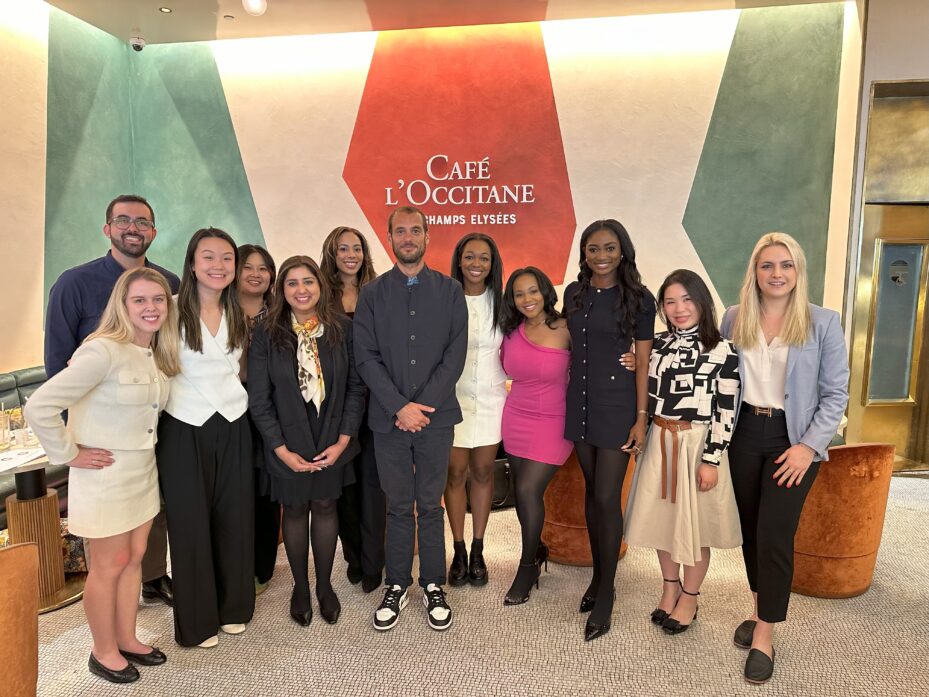
At Le French Beauty, we met Shirley Billot, founder of Kadalys, an impact-driven brand tackling banana waste in Martinique. Her message was a powerful reminder that beauty can drive sustainability and innovation.
“The beauty of tomorrow is shaped at the intersection of agriculture and green chemistry,” Billot said. “At Kadalys, we believe agricultural waste holds immense potential to regenerate both skin and planet.”
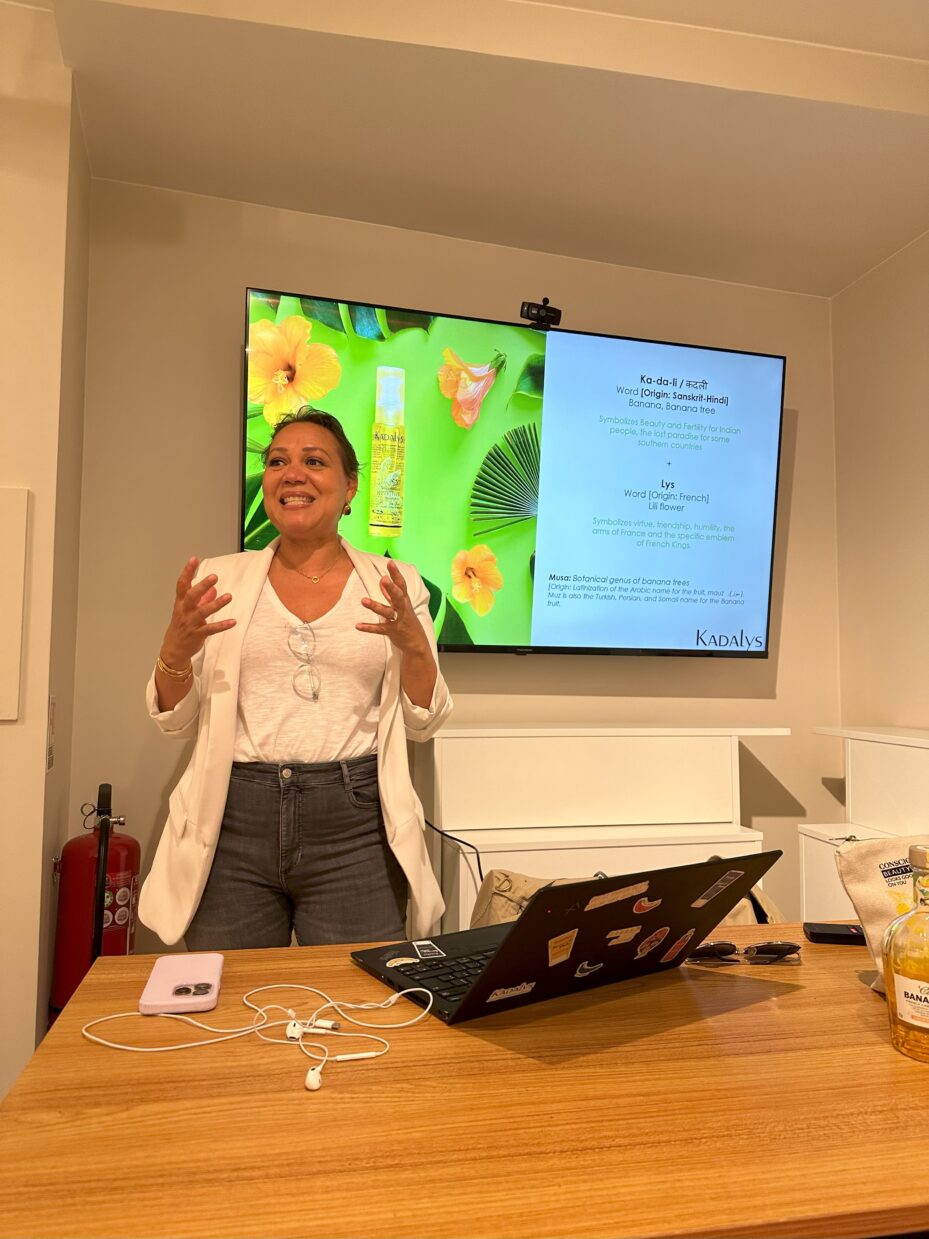
To round out our first day in Paris, we visited Korres’ store, met Bastille’s Managing Director, toured Diptyque’s flagship, and explored fragrances at Printemps, where scent is treated as its own cultural and commercial category.
On our second day, we visited Sisley Paris. Their headquarters, featuring zebra print elevators and red-striped carpets, reflected the brand’s playful sophistication. CEO Philippe d’Ornano shared insights on their commitment to quality, philanthropy, and innovation, including their investment in Neuré, a brand merging neuroscience and skincare.
“Two things are key: a product of exceptional quality and the good advice given to the customer,” d’Ornano shared. “Our business is about science and service.”
In London, we met Demetra Pinsent, CEO of Charlotte Tilbury. Her path from medicine to McKinsey to beauty was a masterclass in embracing nonlinear careers. She urged us to pursue brands we love and to value people over linear paths.
“The beauty industry benefits from diverse perspectives,” Pinsent said. “Be open-minded about your route. Consulting or banking can provide valuable experience. Some of our best ideas came from unexpected fields.”
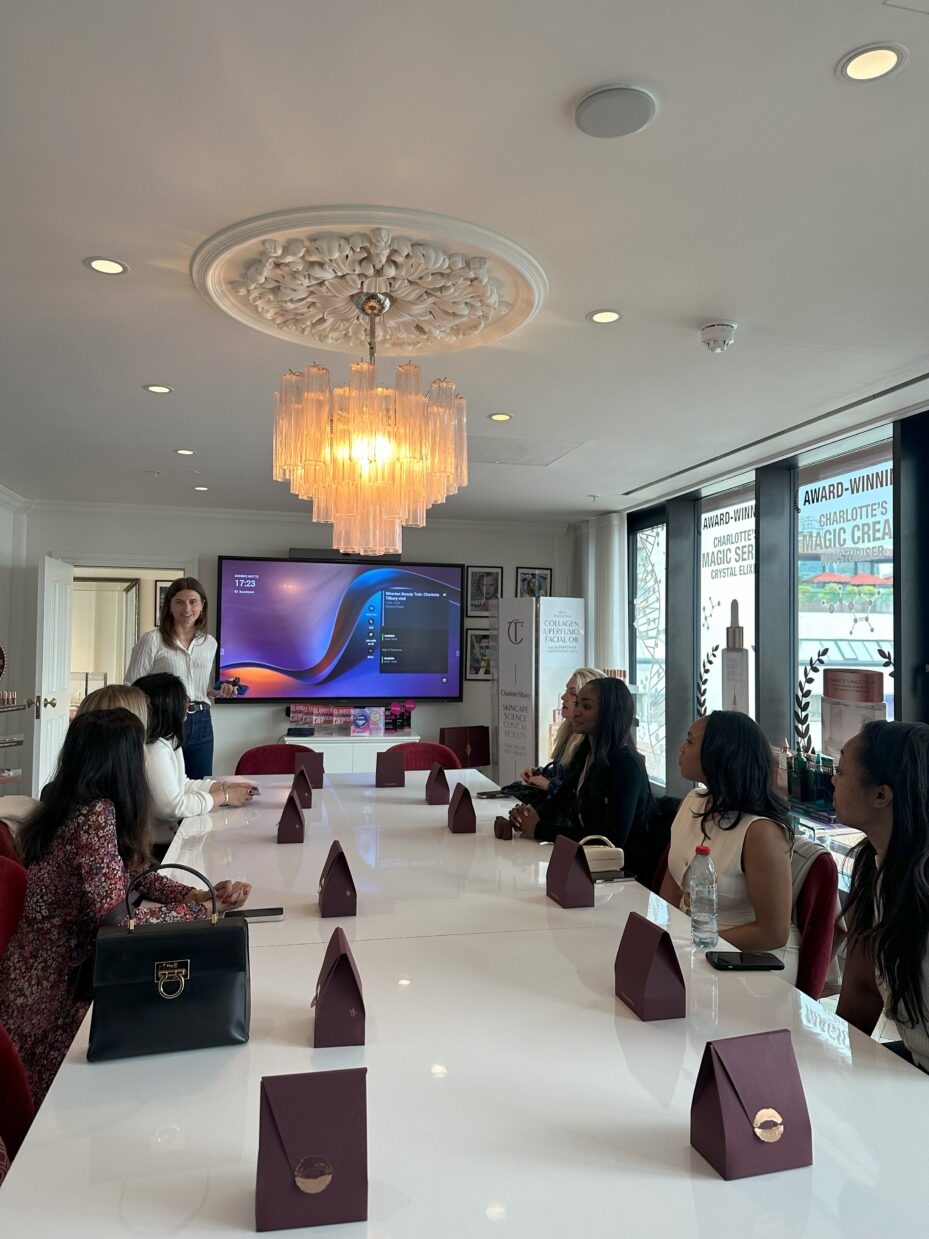
At Tom Ford Beauty, Ronald Naidoo, Regional Marketing Director, discussed evolving the brand’s portfolio through innovative sub-brands like Balmain Beauty.
At Jo Malone London’s townhouse, we learned how fragrance creation, sometimes taking years, roots itself in personal stories, like the British seaside-inspired Wood Sage & Sea Salt. Their scents are designed for layering, encouraging individual expression.
Charles Beck, Head of Global Strategy at Aesop, spoke about balancing intuition with data, especially after L’Oréal’s acquisition. He emphasized the value of pairing strategy work with operating experience.
We concluded at Forest Essentials, India’s leading Ayurvedic beauty brand, visiting their first international store in London. Though Estée Lauder holds a stake, the brand remains independently operated, showcasing the rise of natural products globally.
Final Reflections
This trek gave us rare access to global leaders and deepened our understanding of how brands balance tradition, innovation, and evolving values. Storytelling, authenticity, and emotional connection are critical to building consumer trust.
A key takeaway: experiences around products, through education, purpose, and community, matter. Brands must balance sustainability and inclusion with transparency. And always, product quality must come first; consumers notice.
Ultimately, this trek reminded us that beauty is about more than products. It’s about people, passion, and purpose. It’s where creativity meets commerce, and where MBAs can lead with intention and heart.
– Aarati Cohly WG25 and Yutong Liu WG26
Posted: July 14, 2025




